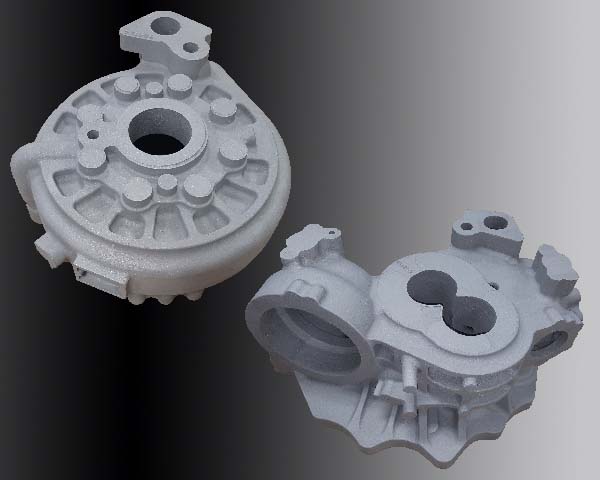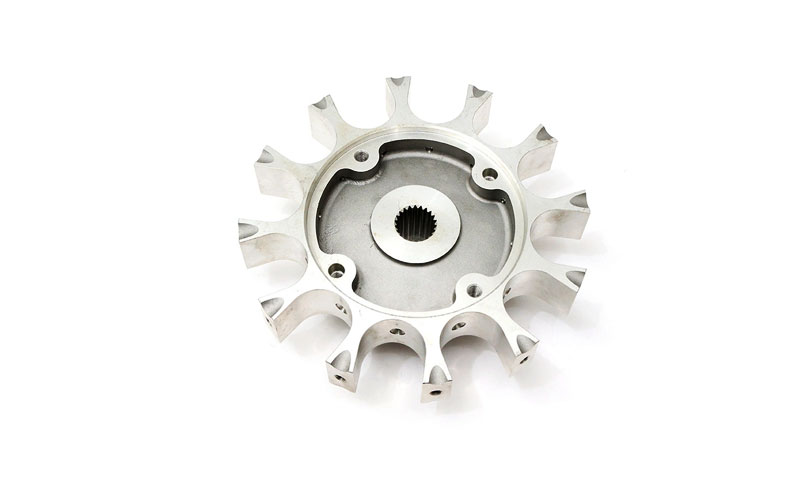Recognizing Aluminum Casting: A Comprehensive Guide to Its Applications and benefits
Aluminum casting is a procedure that changes molten aluminum right into solid kinds via different methods. This technique uses noteworthy advantages, such as light-weight toughness and corrosion resistance. It locates applications in many industries, reflecting its flexibility. Understanding the details of aluminum casting and its best practices can considerably affect the high quality of the final item. Discovering these components exposes truth capacity of aluminum casting in modern manufacturing.
The Essentials of Aluminum Casting
Aluminum casting is a manufacturing process that changes molten aluminum into strong things via numerous methods. This process starts with home heating aluminum till it reaches its melting factor, permitting it to stream right into molds. There are several approaches of aluminum casting, including sand casting, die casting, and financial investment casting, each ideal for different applications based upon design complexity and manufacturing volume.
In sand casting, molds are developed utilizing sand, giving flexibility for intricate shapes. Die casting includes compeling liquified aluminum into a steel mold under high stress, resulting in repeatable and specific components. Financial investment casting, on the other hand, utilizes a wax pattern that is covered with ceramic to create detailed elements.
After the aluminum cools down and solidifies, the molds are removed, disclosing the finished items. This casting process is integral in numerous sectors, consisting of automotive, aerospace, and customer products, enabling the production of long lasting and light-weight parts.
Advantages of Aluminum Casting
One of the key advantages of aluminum casting depends on its capacity to produce light-weight yet solid elements. This distinct combination makes aluminum an excellent choice for numerous markets, including auto, aerospace, and customer products. The fundamental corrosion resistance of aluminum likewise improves the toughness of the actors parts, lengthening their life expectancy and decreasing the need for maintenance.
Additionally, aluminum casting permits intricate geometries and detailed designs, which can lead to much more efficient and cosmetically pleasing products. The product's outstanding thermal and electric conductivity further expands its applications, specifically in electronic devices and warm exchangers.
Aluminum recycling is extremely reliable, contributing to ecological sustainability and reducing manufacturing prices. In general, the advantages of aluminum casting placement it as a functional and functional solution for makers looking for to enhance performance while decreasing weight and source usage.
Common Methods of Aluminum Casting
While various methods exist for aluminum casting, each method supplies distinctive benefits customized to particular applications. The most typical approaches consist of sand casting, die casting, and investment casting.
Sand casting, known for its versatility, uses sand molds to develop intricate forms and is appropriate for both huge and tiny production runs. Die casting, on the various other hand, employs high-pressure shot of molten aluminum right into steel molds, causing smooth surface areas and exact measurements, making it excellent for mass production.
Investment casting, usually described as lost-wax casting, includes creating a wax pattern coated with a ceramic covering. Aluminum Foundry. When the wax is thawed away, liquified aluminum is poured right into the dental caries, yielding elaborate styles and exceptional surface area finishes
Each of these techniques plays a crucial function in the aluminum casting landscape, supplying specific advantages that cater to differing manufacturing needs and production ranges.
Applications Across Industries
The adaptability of aluminum casting methods enables a large range of applications across numerous sectors. In the vehicle sector, lightweight aluminum components enhance fuel performance and efficiency, adding to the growing need for electric vehicles. Aerospace industries use aluminum castings for their strength-to-weight proportion, making sure safety and security and toughness in airplane manufacturing.
The building sector benefits from aluminum casting with building aspects and architectural parts that withstand corrosion and call for minimal maintenance. In addition, customer electronic devices suppliers use aluminum castings for real estates and frameworks, stabilizing looks with performance.
In the aquatic sector, aluminum castings are favored for watercrafts and marine devices as a result of their resistance to saltwater rust. The medical area uses aluminum castings in surgical instruments and tools, ensuring precision and reliability. On the whole, aluminum casting's adaptability allows it to satisfy the varied demands of several sectors, making it a vital manufacturing process.
Best Practices for Effective Aluminum Casting
Effective aluminum casting depends on a mix of careful preparation, accurate execution, and detailed top quality control. Initially, choosing high-grade aluminum alloys is essential, as they straight influence the casting's residential properties and performance. Appropriate mold layout is necessary, guaranteeing that it fits thermal tightening and lessens problems.
Throughout the melting process, keeping the appropriate temperature level and you could try these out avoiding contamination are vital to accomplishing a consistent alloy. Furthermore, making use of reliable pouring methods can enhance the dental filling of molds, minimizing the possibility of air pockets or inclusions.
Post-casting, carrying out complete evaluation techniques, such as visual assessments and non-destructive testing, assures that defects are identified early. Employing rigorous top quality control actions throughout the process assists maintain uniformity and dependability in the last items. By sticking to these best practices, suppliers can substantially enhance the success and effectiveness of their aluminum casting procedures.
Often Asked Concerns
What Safety and security Actions Should Be Taken During Aluminum Casting?

Just How Can Flaws in Aluminum Castings Be Reduced?
Flaws in aluminum castings can be lessened via careful mold and mildew layout, proper temperature level control, making certain clean metal, making use of ideal pouring strategies, and conducting thorough examinations to recognize and address issues before finalizing the casting process.

What Is the Environmental Influence of Aluminum Casting?
The environmental effect pop over here of aluminum casting includes energy-intensive processes, greenhouse gas exhausts, and resource extraction worries. Nonetheless, advancements in reusing and lasting techniques can alleviate these results, promoting a much more environment-friendly technique to aluminum manufacturing.
Can Aluminum Casting Be Reused?
Yes, aluminum casting can be recycled successfully. The reusing process needs substantially less energy contrasted to key aluminum manufacturing, making it an eco-friendly option that contributes to resource preservation and reduced carbon emissions.
What Are the Prices Related To Aluminum Casting Processes?
Expenses associated with aluminum casting procedures include material expenses, labor, tools maintenance, power usage, and mold and mildew construction. These variables can vary significantly based on production range, intricacy of styles, and particular production strategies utilized.
Aluminum casting is a process that changes liquified aluminum into solid types with various strategies. Aluminum casting is a production procedure that changes liquified aluminum right into strong items with different methods. While various techniques exist for aluminum casting, each method provides distinct benefits customized to particular applications. The environmental effect of aluminum casting consists of energy-intensive processes, greenhouse gas exhausts, and resource removal additional resources problems. Expenses linked with aluminum casting processes consist of product expenses, labor, tools maintenance, power consumption, and mold manufacture.